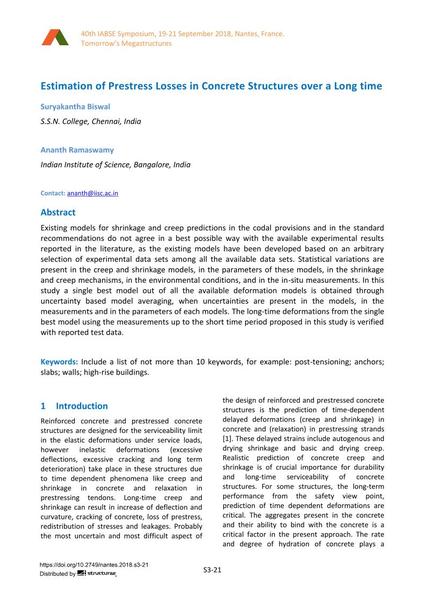Estimation of Prestress Losses in Concrete Structures over a Long time

|
|
|||||||||||
Détails bibliographiques
| Auteur(s): |
Suryakantha Biswal
(S.S.N. College, Chennai, India)
Ananth Ramaswamy (Indian Institute of Science, Bangalore, India) |
||||
|---|---|---|---|---|---|
| Médium: | papier de conférence | ||||
| Langue(s): | anglais | ||||
| Conférence: | IABSE Symposium: Tomorrow’s Megastructures, Nantes, France, 19-21 September 2018 | ||||
| Publié dans: | IABSE Symposium Nantes 2018 | ||||
|
|||||
| Page(s): | S3-21 | ||||
| Nombre total de pages (du PDF): | 8 | ||||
| DOI: | 10.2749/nantes.2018.s3-21 | ||||
| Abstrait: |
Existing models for shrinkage and creep predictions in the codal provisions and in the standard recommendations do not agree in a best possible way with the available experimental results reported in the literature, as the existing models have been developed based on an arbitrary selection of experimental data sets among all the available data sets. Statistical variations are present in the creep and shrinkage models, in the parameters of these models, in the shrinkage and creep mechanisms, in the environmental conditions, and in the in-situ measurements. In this study a single best model out of all the available deformation models is obtained through uncertainty based model averaging, when uncertainties are present in the models, in the measurements and in the parameters of each models. The long-time deformations from the single best model using the measurements up to the short time period proposed in this study is verified with reported test data. |
||||
